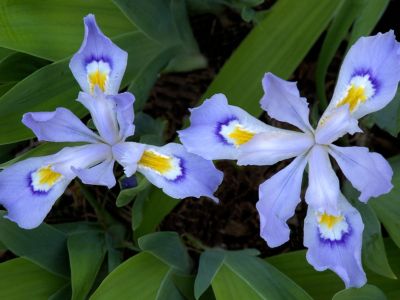About Miniature Irises
It’s still an iris, only smaller. In fact, most dwarf irises only reach about 6 to 8 inches (14-20 cm.) tall, making them ideal for borders or even edging. These tiny wildflower wonders spread through underground rhizomatous stems, filling the garden with their lovely spring blooms. While there are many types of dwarf iris, it’s the dwarf crested iris (Iris cristata) that steals my heart. Dwarf crested iris will blanket the site with flowers that are rich in various shades of purple or bluish colors having white and yellow crested markings. There are many other cultivars as well, including white forms, so finding one that suits your needs shouldn’t be hard.
Growing Crested Iris Plants
Growing and planting dwarf iris is not difficult at all. They prefer to be grown in areas that mimic their natural wooded habitat, which includes moist, well-draining soil. While it’s not an absolute, dwarf crested iris does appreciate some amending with sand and leaf mold. The plants should also be located in full sun or partial shade. However, if you’re growing crested iris plants in full sun, then you’ll need to ensure the soil doesn’t dry out. Planting dwarf iris can be done in spring or fall. Shallow planting is preferable as with most other types of iris plants. Although these miniature irises are available from many reputable nurseries, if you’re lucky enough to have the wildflowers growing on your property, they will transplant easily to a similar location in the garden.
How to Care for a Dwarf Iris
Once established in the garden, these little gems require hardly any care. In fact, they pretty much take care of themselves. Other than keeping the soil moist, which can be helped along by providing leaf mulch, you really don’t need to do much else. As long as the soil is relatively fertile or amended with organic matter, there’s no need for fertilizer either. You may, however, want to divide the plants every three to four years to reduce overcrowding. This is also a good way to propagate the plants. Simply divide the rhizomes in the fall once foliage turns yellow and replant elsewhere.
